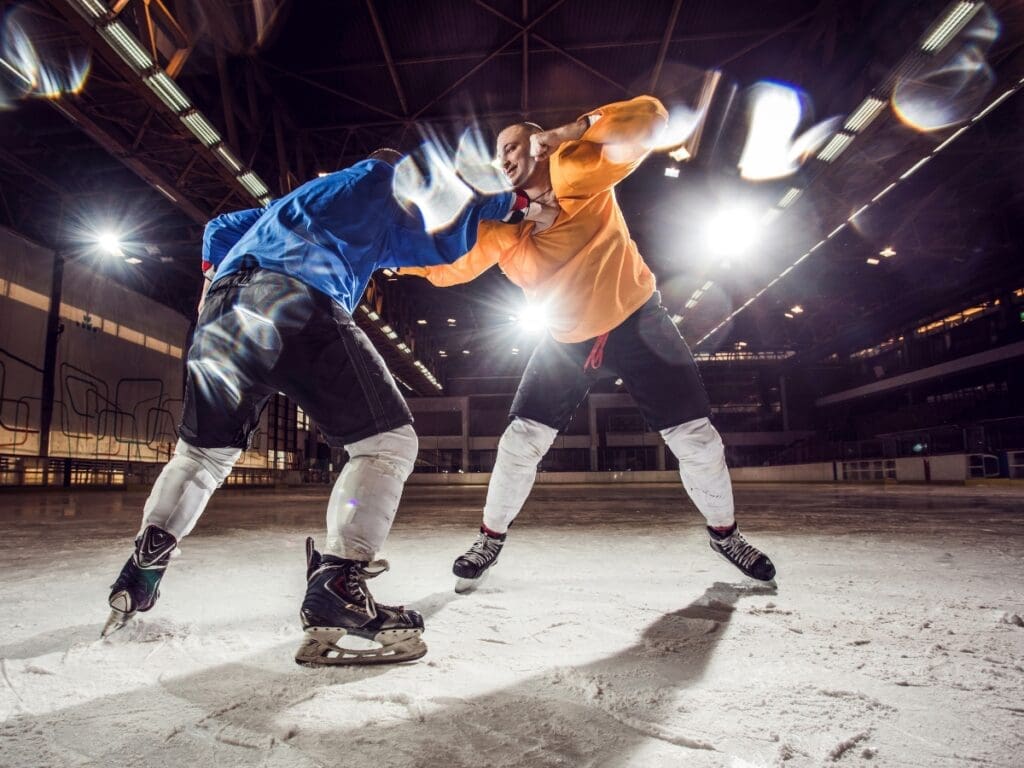Hockey, like any sports game, has its unique rules and statistics that shape the way we view and understand the game. Among the many stats that hockey fans and players pay attention to, Penalty Infraction Minutes (PIM) stands out as a unique measure of both individual player discipline and their impact on the team’s performance. In this guide, we’re going to explore what PIM means in hockey, its implications, and how it fits into the sport as a whole.
We may earn a small commission from links in this article.
Decoding PIM: More Than Just Time in the Penalty Box
At its core, PIM in hockey refers to the total amount of time a player has been penalized during games. This can include a range of different types of penalties such as minor penalties, major penalties, game misconduct penalties, and match penalties. Each type of penalty contributes a different amount of time to a player’s PIM total.
Minor penalties, like high sticking or delay of game, typically result in the offending player spending two minutes in the penalty box. On the other hand, major penalties, which are given for more severe infractions such as unsportsmanlike conduct or fighting, lead to a five-minute penalty. And then there are match penalties and game misconduct penalties that result in the player being ejected from the game, adding significantly to their PIM.
Read More: Can A Hockey Game End In A Tie?
The Impact of Penalties in a Hockey Game
The accumulation of Penalty Infraction Minutes impacts the game in several ways. Firstly, it leads to power plays and short-handed goals. When a player is in the penalty box, their team plays with one less player, giving the opposing team a numerical advantage, known as a power play. This can significantly shift the momentum of the game, especially if the opposing team scores.

Conversely, a team that is short-handed can also score a shorthanded goal, which is a testament to their defensive strength and strategy under pressure. Thus, a player’s PIM can directly influence the number of goals scored against their team and the overall outcome of the game.
Read More: How Big Is A Hockey Net?
PIM in Fantasy Sports and Real-Life Strategy
For fantasy hockey fans, a player’s PIM can be a double-edged sword. On one hand, a high PIM player demonstrates physical play and toughness, which might be valuable in certain fantasy hockey leagues. They may block more shots, contribute to the physical aspect of the game, and occasionally help in categories like plus/minus rating or even score power-play goals.
However, spending a lot of time in the penalty box also means that the player is less available to contribute positively to the game. They can’t score game-winning goals, assist teammates, or defend against opposing players while penalized. For real-life hockey strategy, coaches often have to balance the aggressive physical play leading to penalties with the need to keep key players on the ice.
Read More: What’s A Slewfoot In Hockey?
Notable PIMs in NHL History
Across the National Hockey League, a few names stand out when we talk about Penalty Infraction Minutes. Players like Dave Schultz, known as “The Hammer,” and Tiger Williams top the list of NHL players with the most penalty minutes, showing a blend of toughness and aggression that marked their playing style. Meanwhile, players like Chris Chelios showed that accumulating a high number of PIMs doesn’t always mean a player isn’t contributing positively; Chelios had a remarkable career over 26 seasons.
The Bottom Line on PIM
While some may view a high PIM as a negative stat, indicative of a player’s discipline issues, others see it as a sign of a tough player willing to stand up for their team and engage in the physical aspect of the game. Ultimately, whether a high PIM is a good or bad thing depends on the context — the player’s role, the league’s scoring system, and the specific game situation.
In the fast-paced, action-packed world of ice hockey, penalties are an inevitable part of the game. They represent the thin line between aggressive defense and rule infractions. Hockey players and fans alike understand that while it’s always better to have your players on the ice than in the box, sometimes, those Penalty Infraction Minutes are a necessary part of the strategy that makes the game what it is.
So, next time you’re analyzing a player’s stats or choosing your fantasy hockey lineup, consider the PIM stat with a nuanced perspective. It could just be the difference between winning and losing, both on the ice and in your fantasy league.
| PIM Element | Detail | Impact on Game | Interesting Fact |
|---|---|---|---|
| Minor Penalties | 2 minutes in the penalty box for infractions such as tripping or high sticking. | Can lead to power-play opportunities for the opposing team. | The most common PIM incurred in hockey. |
| Major Penalties | 5 minutes in the box for severe infractions like fighting. | Offers a significant power play advantage, potentially changing the game’s momentum. | Fighting is a major penalty that fans have mixed feelings about. |
| Game Misconduct Penalties | Ejection from the current game, no return. | Reduces team flexibility and can impact team morale and strategy. | Often results from unsportsmanlike conduct or intent to injure. |
| Match Penalties | Ejection and potential suspension, subject to review. | Can impact not just the current game but future games depending on the length of suspension. | Among the rarest and most severe penalties. |
| Penalty Shot | Awarded for specific offences like a defender displacing the net on purpose. | A direct opportunity to score against the opposing goaltender without any defenders interfering. | A highly tense and anticipated moment in any game. |
| Double Minor Penalty | 4 minutes in the penalty box for blood-drawing infractions, like high sticks causing injury. | Gives the opposing team a prolonged power play, increasing the chance of scoring. | The penalty time is served in two parts. |
| Impact on Fantasy Hockey | High PIM players might provide physicality but can also mean less play time. | Managers need to weigh the physical presence against the potential loss of points from goals and assists. | Some leagues award points for PIM, adding strategy. |
| Historical PIM Leaders | Tiger Williams holds the all-time record for most PIMs in NHL history. | Demonstrates the evolving nature of the game from physical play to a more speed and skill-oriented game in recent years. | Williams accumulated 3,966 PIMs across his NHL career. |
- LEARN TO PLAY: The Franklin Future Champs NHL Kids Hockey Stick Set is perfect for teaching your little athletes how to play the sport for the first time
- MULTI-PLY WOOD SHAFT: The high density poplar/birch wood shaft is constructed to be lightweight which helps advance players speed and agility
- STREET HOCKEY STICKS: Wind up your best street hockey slapshot and score with GoSports Street Hockey Sticks; Complete set includes 2 premium wooden hockey sticks and 2 balls
- Durable 36″ ABS plastic, lightweight shaft
Prices and availability are subject to change. Last update on 2025-07-15 / Affiliate links / Images from Amazon Product Advertising API



